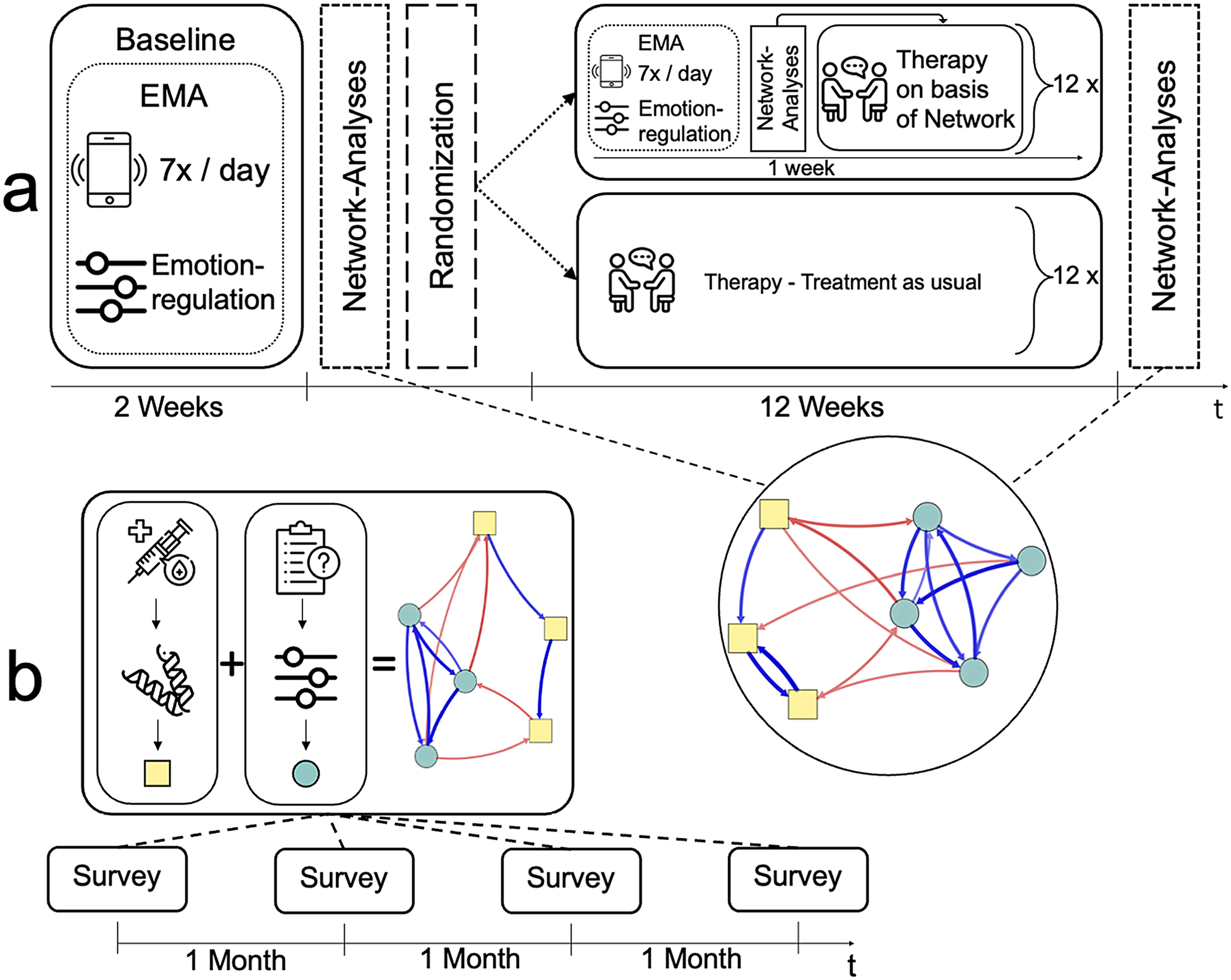Fig. 1.

Two exemplary study designs based on multimodal dynamic network principles. An illustration of our approach with two worked-out examples. Depicted networks do not reflect real data, but are solely intended for illustrative purposes. Study A employs intensive data collection using EMA surveys, focusing on patients with emotion regulation difficulties. EMA survey is utilized to combine measures of both “normal” psychology and psychopathology. Baseline surveys establish individual dynamic networks based on nodes derived from the Difficulties In Emotion Regulation Scale (DERS; Gratz & Roemer, 2004), in this case, Emotional Awareness, Emotional Clarity, Acceptance, and Impulse Control (highlighted in circles). Transdiagnostic processes such as stress, physical activity, and rumination are included (highlighted in squares). Participants complete surveys seven times a day for two weeks. Randomly assigned to a “network-based therapy” or treatment-as-usual condition, participants in the network-based therapy condition receive tailored treatment based on their network model. Interventions particularly target critical self-sustaining feedback loops and pertinent (i.e., central) nodes. Throughout the 12-week therapy period, they continue responding to relevant questions using EMA. In the treatment-as-usual condition, therapy is manual-based without continuous data collection. At the end of therapy, networks are reconstructed for all participants for evaluation. Study B utilizes a panel model with less frequent data collection. Participants attend data collection sessions four times at monthly intervals. Blood samples are collected during each session using Enzyme-Linked Immuno-Sorbant Assay (ELISA) to detect inflammatory markers (C-reactive protein, interleukin, and fibrinogen) that were shown to be relevant to mental health and emotion regulation (e.g., Dedoncker et al., 2021; Fried et al., 2020). Immunoassays can be cost-prohibitive in some cases. However, considering the modest measurement density, a larger sample size could be aimed for. Participants also respond to emotion regulation questions using the DERS. Psychological and biological variables serve as nodes for network analyses. The presented study utilizes a Panel VAR design to analyze longitudinal associations between variables, differentiating within-subject and between-subject effects. Specifically, it employs cross-lagged panel models to investigate the multimodal relationship between inflammatory markers and symptoms of emotion regulation problems. The analysis explores temporal dynamics, reciprocal influences, and potential causal relationships. Valuable insights are gained regarding the impact of emotion regulation changes on biological markers. Additionally, the study aims to explore influential effects of variables such as gender, age, and disorder status and the relationship between inflammatory markers and symptoms of emotion regulation problems. Icons used in the figure come from the website Flaticon and are subject to the terms of the Creative Commons license (CC BY 4.0). Attribution and authorship credentials are detailed in the acknowledgment section and references, respectively
